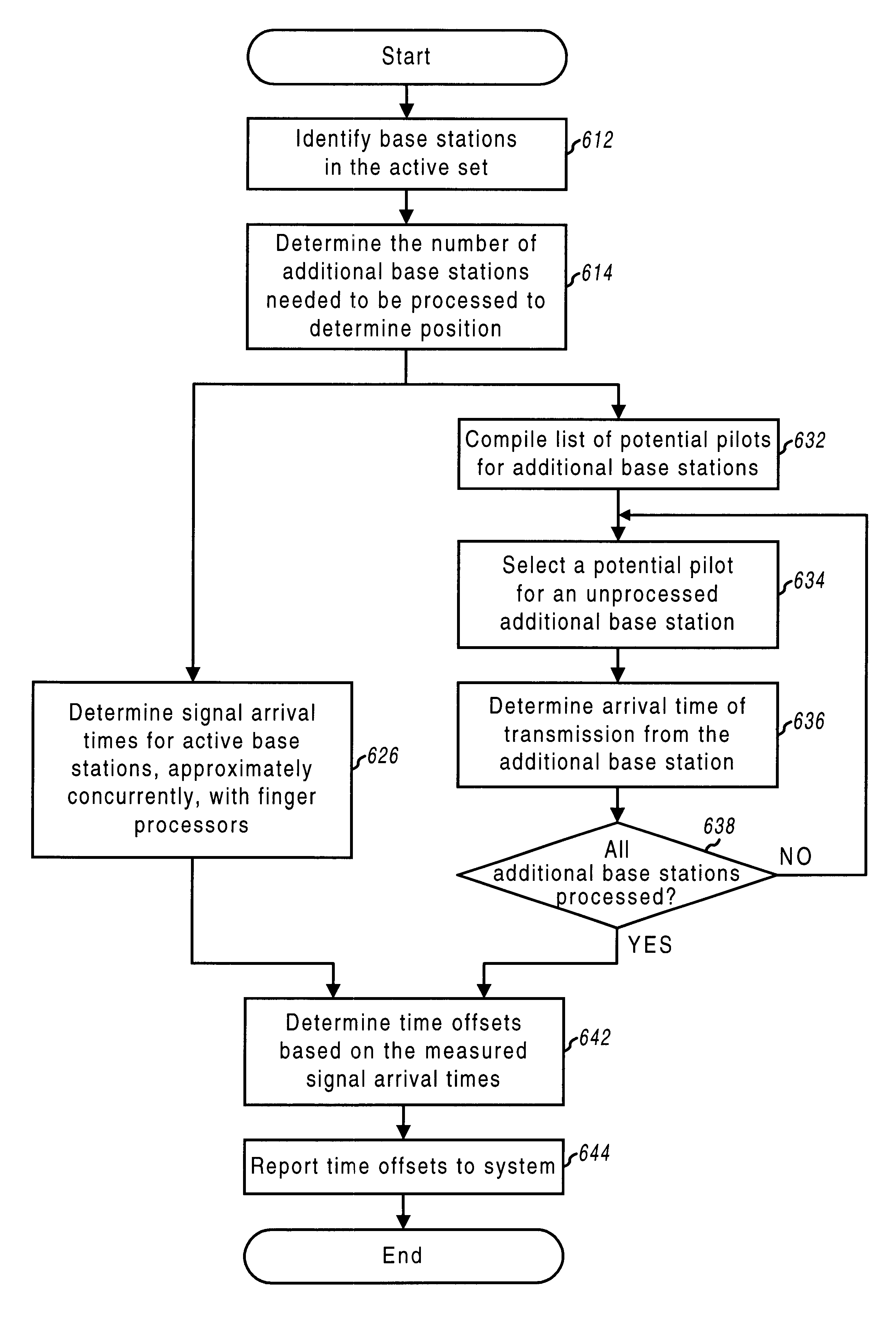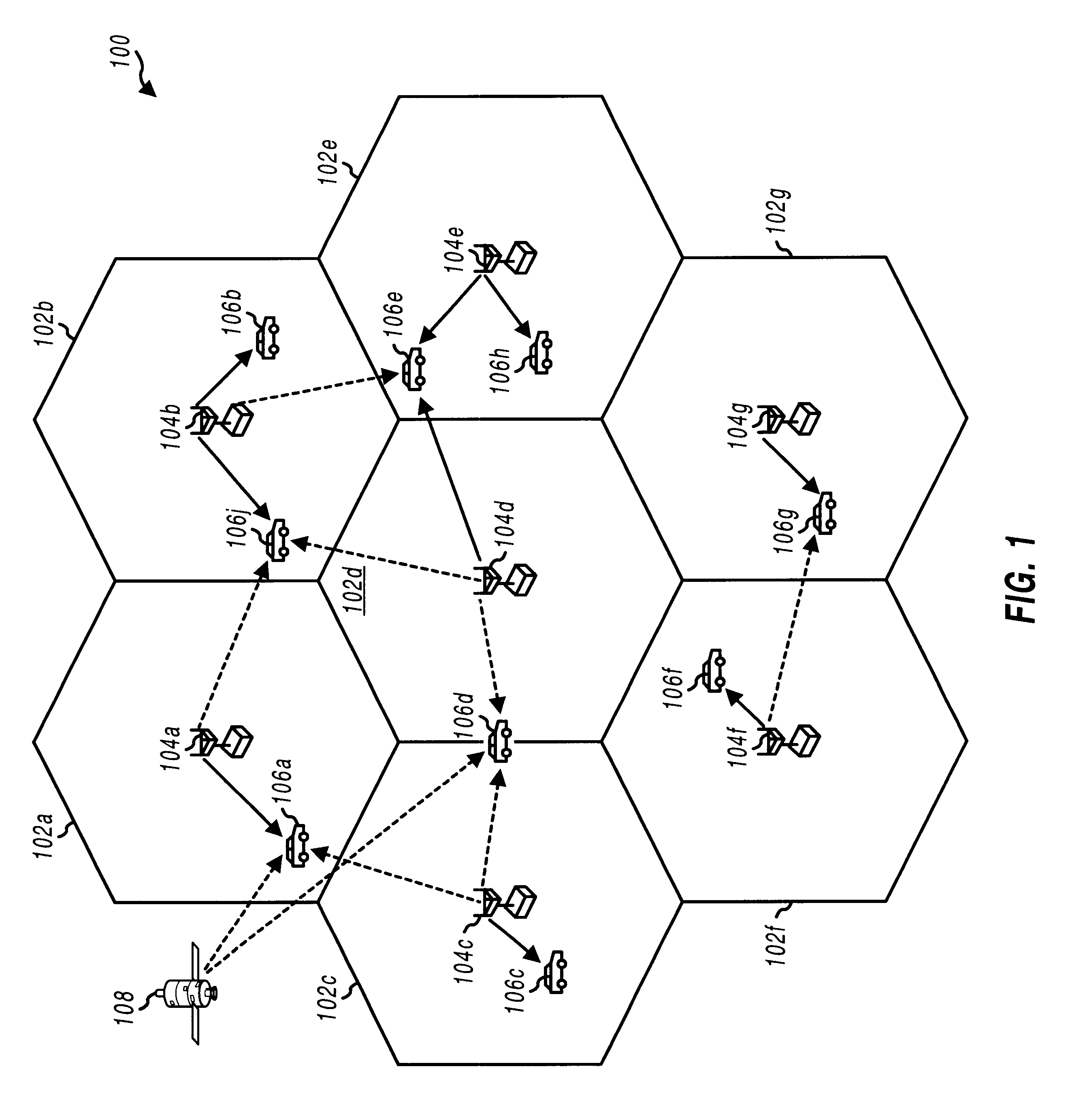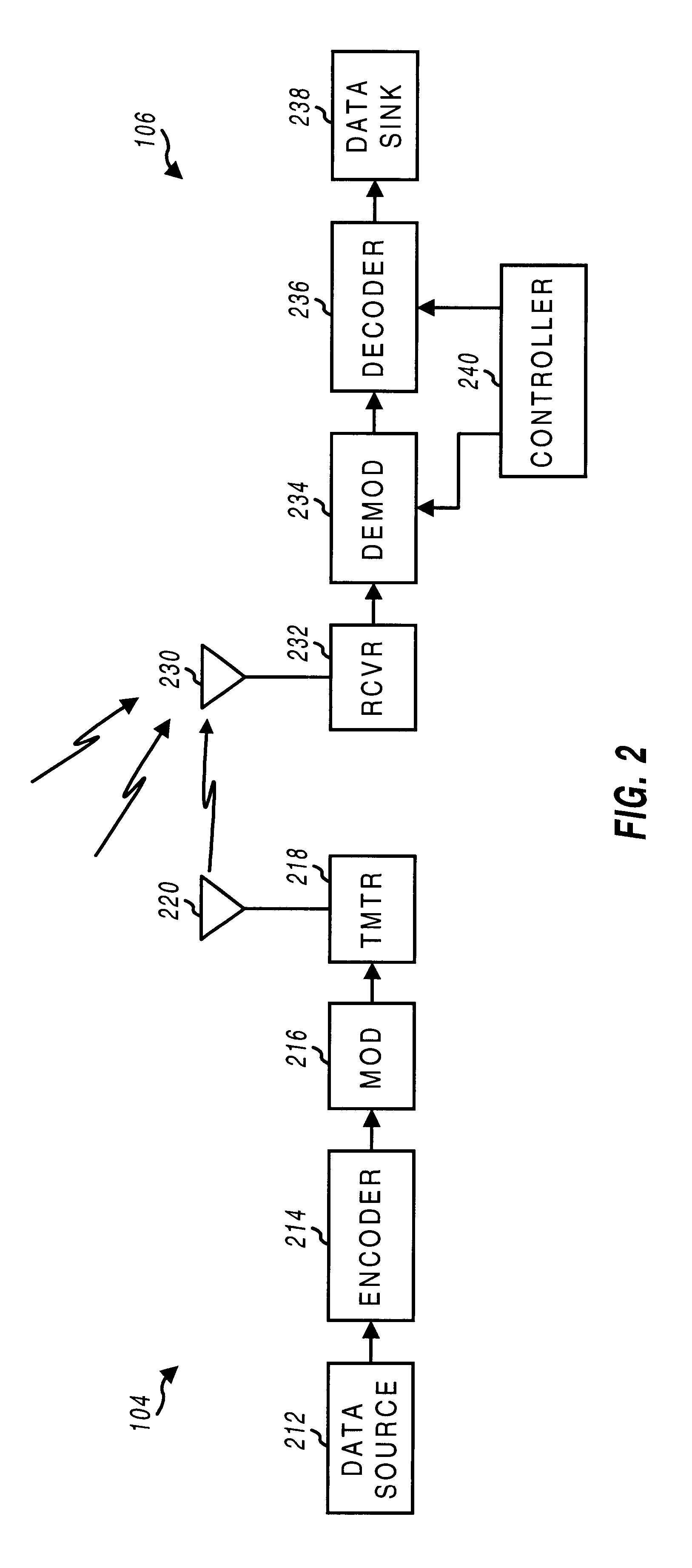Method and apparatus for measuring timing of signals received from multiple base stations in a CDMA communication system
a communication system and multiple base station technology, applied in the field of data communication, can solve the problems of affecting the accuracy of arrival time measurements and accurate estimates
- Summary
- Abstract
- Description
- Claims
- Application Information
AI Technical Summary
Benefits of technology
Problems solved by technology
Method used
Image
Examples
Embodiment Construction
FIG. 1 is a diagram of a communication system 100 that supports a number of users. System 100 provides communication for a number of cells 102a through 102g, with each cell 102 being serviced by a corresponding base station 104. Various remote terminals 106 are dispersed throughout the system. In an embodiment, each remote terminal 106 may communicate with one or more base stations 104 on the downlink and uplink at any given moment, depending on whether the remote terminal is in soft handoff. The downlink (forward link) refers to transmission from the base station to the remote terminal, and the uplink (reverse link) refers to transmission from the remote terminal to the base station. System 100 may be designed to conform to one or more CDMA standards, such as the IS-95, W-CDMA, cdma2000, and other standards, or a combination thereof.
As shown in FIG. 1, base station 104a transmits to remote terminals 106a and 106j on the downlink, base station 104b transmits to remote terminals 106b...
PUM
 Login to View More
Login to View More Abstract
Description
Claims
Application Information
 Login to View More
Login to View More - R&D
- Intellectual Property
- Life Sciences
- Materials
- Tech Scout
- Unparalleled Data Quality
- Higher Quality Content
- 60% Fewer Hallucinations
Browse by: Latest US Patents, China's latest patents, Technical Efficacy Thesaurus, Application Domain, Technology Topic, Popular Technical Reports.
© 2025 PatSnap. All rights reserved.Legal|Privacy policy|Modern Slavery Act Transparency Statement|Sitemap|About US| Contact US: help@patsnap.com



